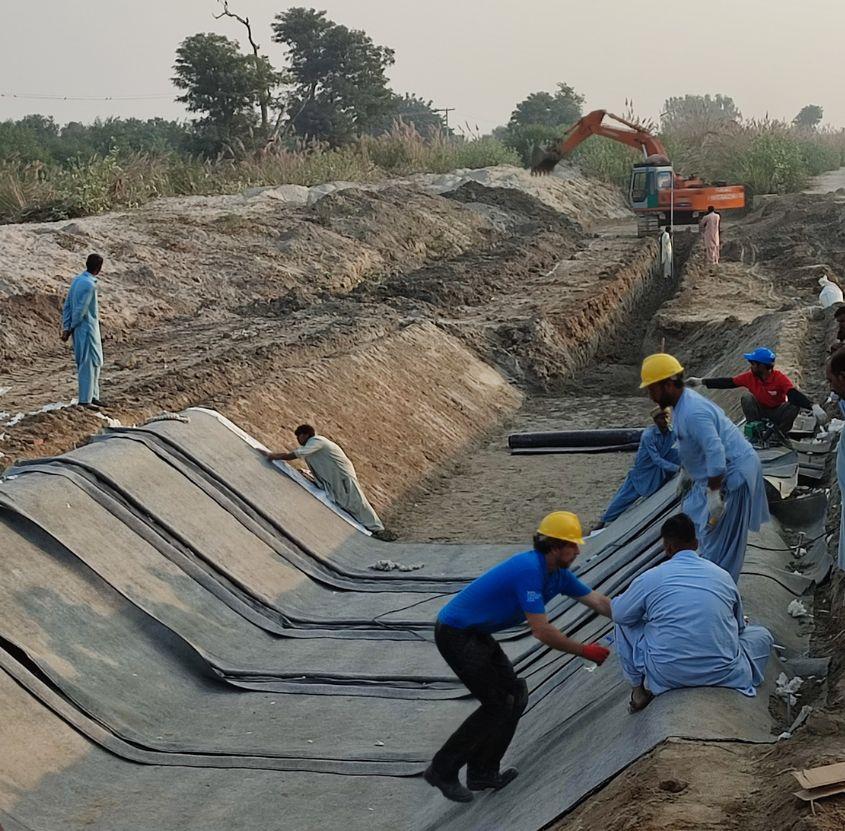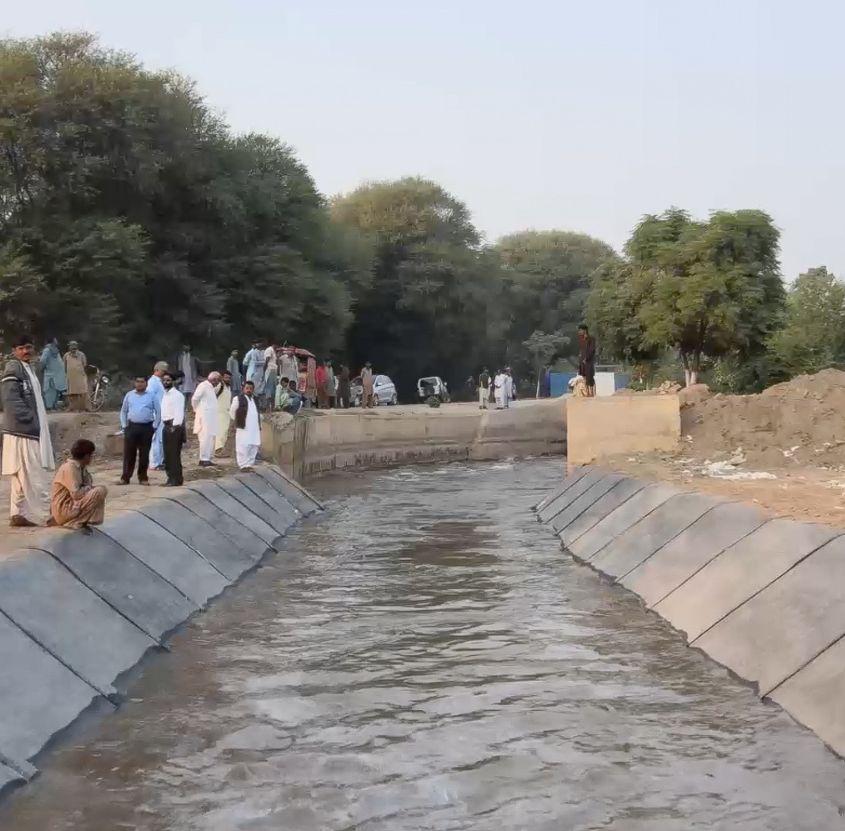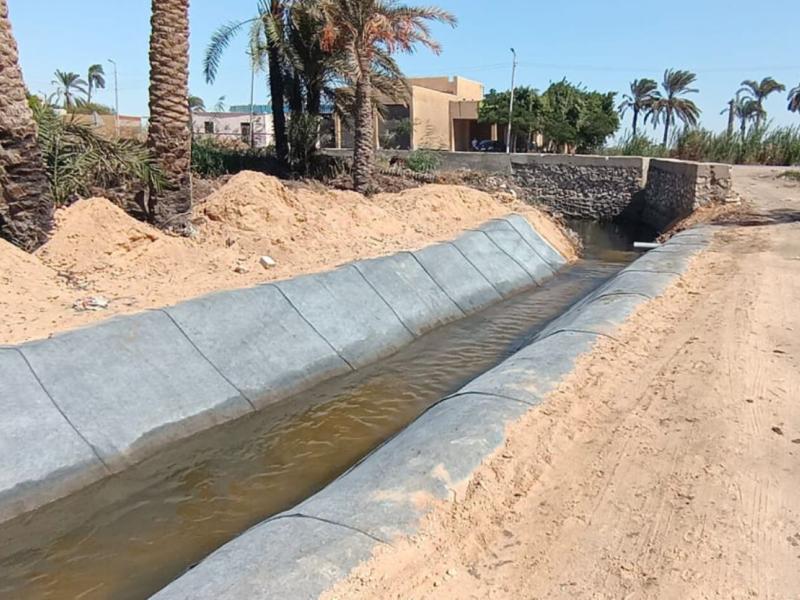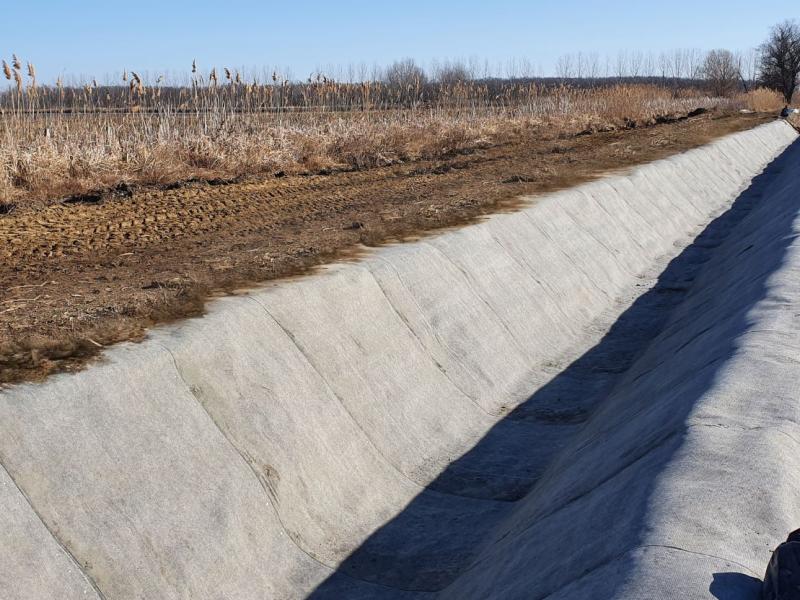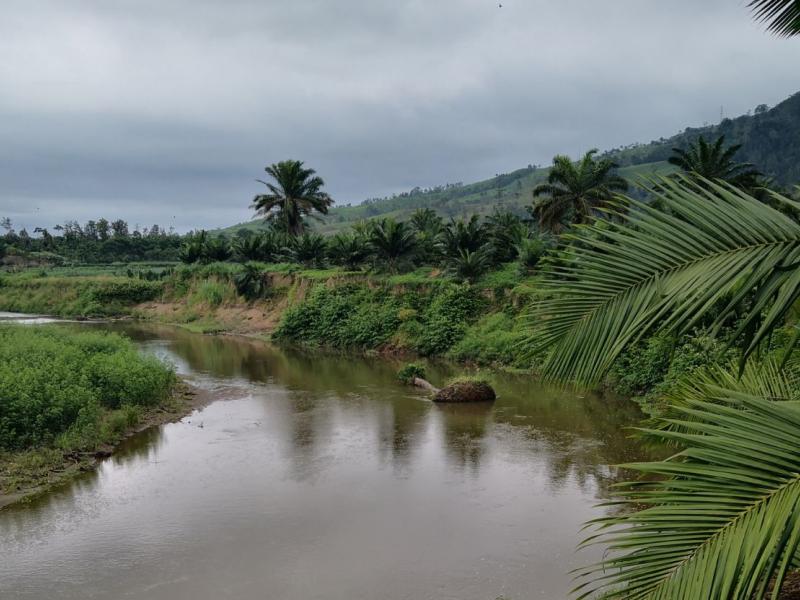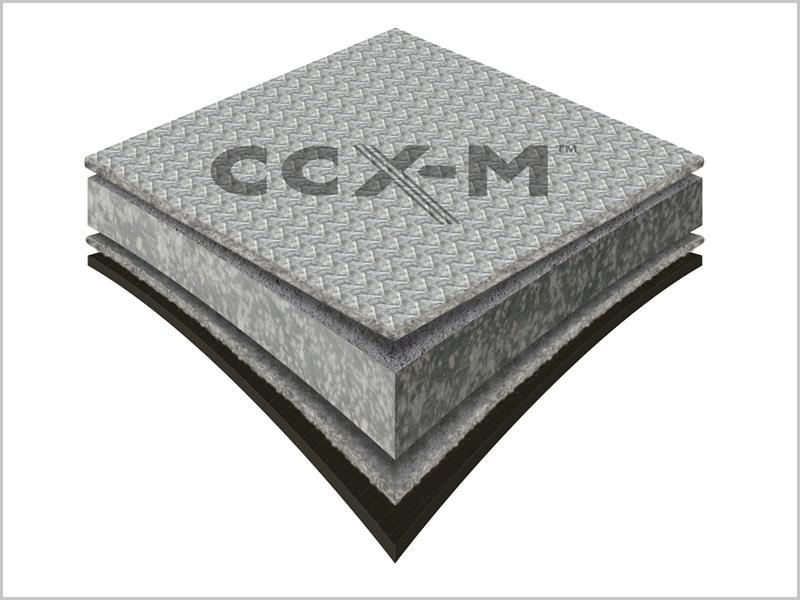
CANAL LINING IN PAKISTAN WITH CONCRETE CANVAS CCX
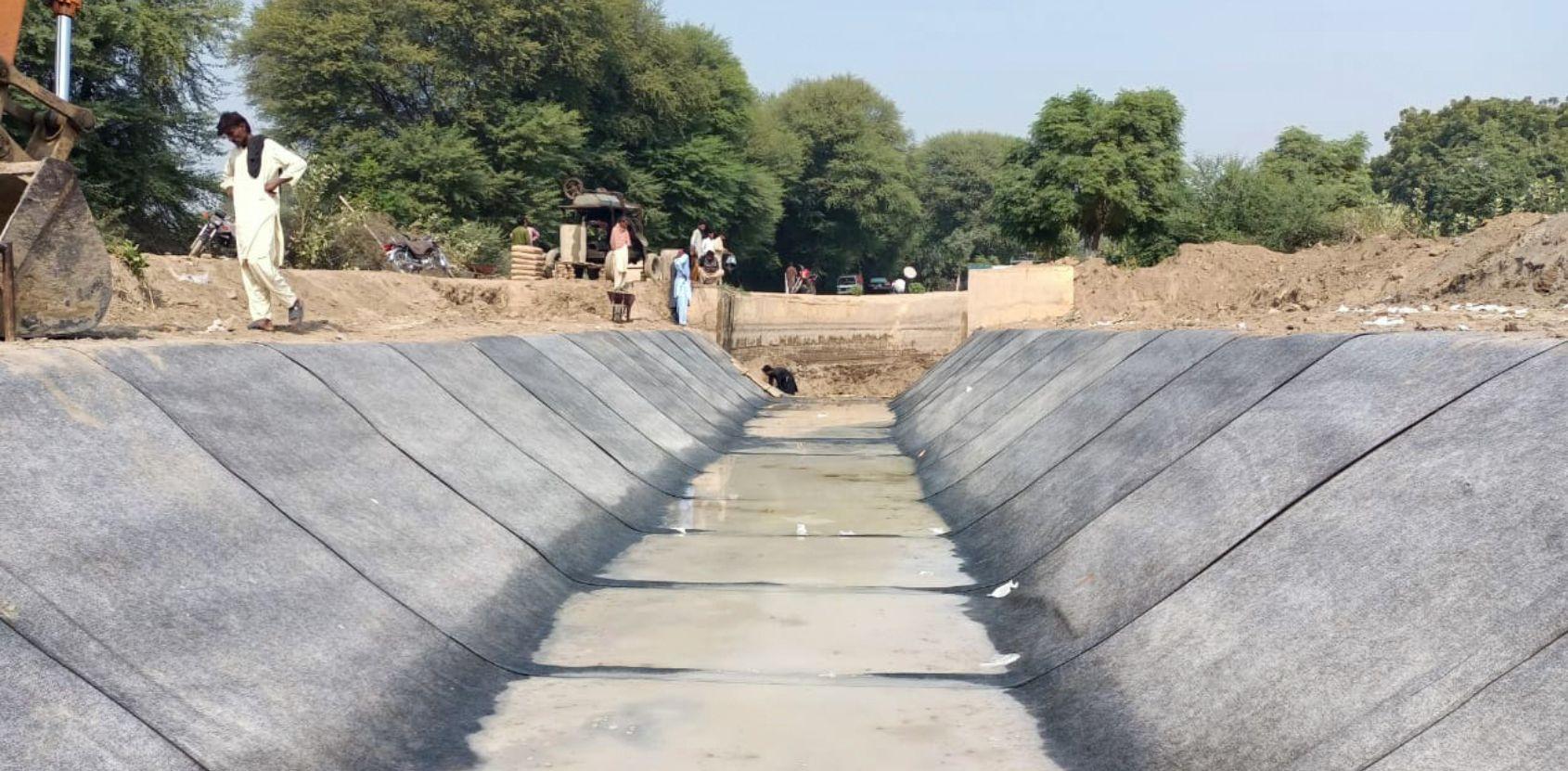
PROJECT DESCRIPTION
In November 2021, CCX-B™ GCCB was used as an impermeable lining for a canal located near Hyderabad, Pakistan. CCX-B™ was used to contain water in the canal, preventing seepage and resultant water logging in the adjacent fields.
Pakistan’s Indus Basin Irrigation system (IBIS) is the world’s largest continuous irrigation system, with over 56,000 kilometres of canals irrigating over 2.5 million acres of land. 72% of Pakistan’s population is associated with agriculture and is the main source of income. Agriculture is Pakistan’s largest economic sector and contributes about 24% of Gross Domestic Product (GDP). Countries around the world are struggling for greater share of water resources including the provinces in Pakistan. Approximately 30% of water used within Pakistan’s irrigation network is lost due to seepage of unlined and conventionally lined water canals. Seepage loses can adversely affect crop yields by way of reduction of the requisite amount of irrigation or by way of water logging and salinisation.
OUR SOLUTION
CCX-B™ was installed as a trial lining to the Ghotano Distributary for the Sindh Irrigation Department. The objective of the trial was to determine the speed and efficiency of the lining in combating seepage losses.
CCX-B™ is a Type II GCCM as defined in ASTM D8364 - Standard Specification for GCCMs. It is suitable for lining hydraulic structures with soil subgrades. ASTM D8364 is the only internationally recognised GCCM specification standard and lists erosion control applications by three classifications, Type I, Type II and Type III. It defines the minimum performance values required for each type based on the use of test methods that are specific to GCCM materials. ASTM D8364 is an important resource for clients, consultants and contractors wishing to ensure the GCCM used on their project is fit for purpose.
When used for canal lining, CCX-B™ typically replaces 100mm of mesh reinforced concrete over geotextile and containment geomembrane layers. The 10mm thick CCX-B™ therefore provides over 90% material savings, reducing the volume of carbon rich resources that are supplied and used on the project. When considering the whole life carbon costs, CCX-B™ requires fewer vehicle movements to and on site, the speed of installation also reduces the carbon emissions of plant and equipment. At the end of life, the reduced volume of CCX-B™ provides further benefits as there is less material to excavate and process.
To prepare for the installation of CCX-B™, soil was back filled into the existing canal and compacted to a minimum of 90% MOD AASHTO, creating a solid platform for a new profile to be excavated. A trapezoid profile with 3m invert width, 1:1 side slopes and 1.5m depth was excavated. The CCX-B™ was then installed with the aid of an excavator and spreader beam, cut and laid transversely, and secured at the shoulders by pegging in anchor trenches. The anchor trenches were 150mm deep and excavated at a distance of 200mm from the canal crest. To prevent the water from the canal seeping into the neighbouring fields, the CCX-B™ joints were thermally welded with an overlap of 100mm. The top cementitious protection layers were secured together using Soudaseal sealant. Due to the location being remote and having no electricity, the CCX-B™ was hydrated using a water pump operated by a generator. At the time of installation, temperatures were approximately 30°C. Hydration was carried out 3 times at 30 minute intervals after nightfall to ensure saturation.
270m2 of CCX-B™ was installed in 1 day by six people. The works were carried out by Sher Muhammed Mugheri with the supervision of the client Ministry of Irrigation.
It was a pleasure to witness the implementation of Concrete Canvas at one of our distries. The overall technology is quite praise worthy. Qualities like easy laying, durability, and water-saving make it one of the best solutions for canal lining application in Sindh, Pakistan.
Mr. Abdul Ghani Khaskheli - Sub-Divisional Office, Irrigation Department Sindh
